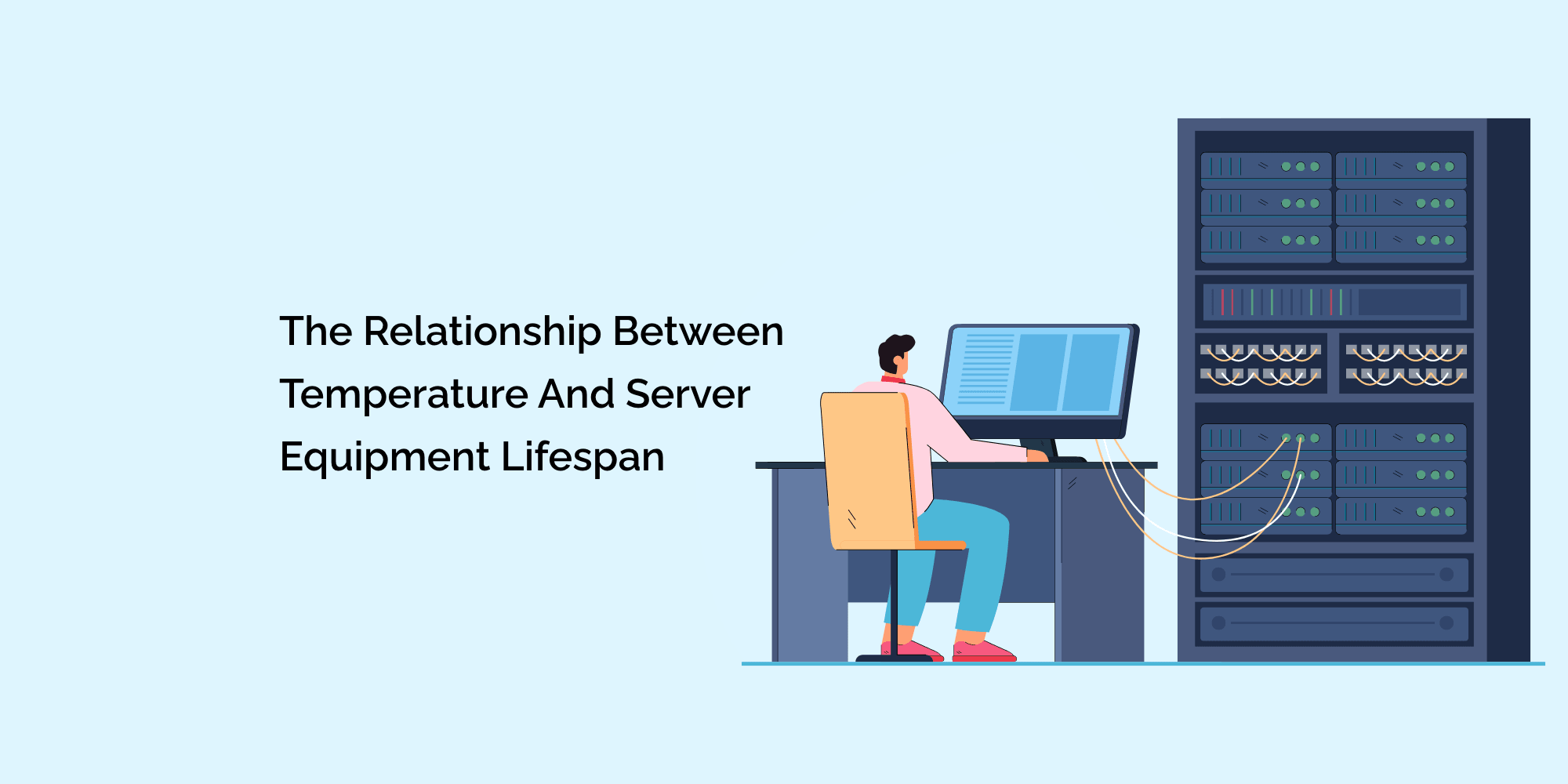In the fast-paced digital age, server equipment serves as the backbone of our digital infrastructure. The reliability and longevity of this equipment are paramount for the seamless functioning of businesses and organizations. Temperature plays a critical role in the performance and lifespan of server equipment.
In this blog, we will explore the relationship between temperature and server equipment lifespan, highlighting the impact of temperature on hardware reliability, the risks of inadequate temperature management, and strategies for maintaining optimal temperature conditions.
Understanding the Impact of Temperature on Server Equipment
The Optimal Temperature Range for Server Equipment
Explaining the ideal temperature range for server equipment, typically between 20 to 25 degrees Celsius (68 to 77 degrees Fahrenheit). Discussing the reasons behind this temperature range and its impact on equipment performance and lifespan.
Effects of High Temperatures on Server Equipment
Exploring the consequences of high temperatures on server equipment, including increased thermal stress, accelerated aging of components, and reduced reliability. Discussing specific risks such as CPU throttling, memory errors, hard drive failures, and overall system instability.
Risks of Inadequate Temperature Management
Overheating and Equipment Failure
Highlighting the risks associated with inadequate temperature management, such as overheating and subsequent equipment failure. Exploring the impact of excessive heat on various server components and the potential for permanent damage or complete system shutdown.
Increased Downtime and Financial Losses
Discussing the correlation between inadequate temperature management, equipment failures, and increased downtime. Highlighting the financial losses incurred due to interrupted business operations, decreased productivity, and potential damage to the organization's reputation.
Strategies for Maintaining Optimal Temperature Conditions
Proper Server Room Ventilation and Airflow
Management Exploring the importance of proper ventilation and airflow management in server rooms. Discussing strategies such as hot aisle/cold aisle configurations, rack placement, and cable management to ensure efficient heat dissipation and airflow.
Cooling Technologies and Equipment
Discussing various cooling technologies used to maintain optimal temperatures in server rooms, including air conditioning, liquid cooling, and free cooling. Exploring the benefits, considerations, and appropriate applications for each cooling method.
Temperature Monitoring and Automation
Highlighting the significance of real-time temperature monitoring and automation in maintaining optimal temperature conditions. Discussing the use of temperature sensors, monitoring software, and automated systems to track temperature levels, trigger alerts, and enable proactive response to temperature fluctuations.
Regular Maintenance and Cleaning
Emphasizing the importance of regular maintenance and cleaning of server equipment and cooling systems. Discussing the impact of dust and debris on heat dissipation and the need for periodic inspection, cleaning, and maintenance tasks to ensure the longevity of server equipment.
Best Practices for Temperature Management
Establishing Temperature Monitoring Policies and Procedures
Discussing the need for clear policies and procedures related to temperature monitoring in server rooms. Exploring best practices such as regular temperature checks, documentation of temperature data, and proactive response to temperature anomalies.
Training and Education for Personnel
Highlighting the importance of training and educating data center personnel on temperature management best practices. Discussing the role of employees in ensuring proper temperature management, early detection of issues, and adherence to established procedures.
Regular Evaluation and Optimization
Encouraging regular evaluation of temperature management strategies and optimization of cooling systems. Discussing the benefits of conducting thermal audits, analyzing temperature data, and implementing improvements to enhance energy efficiency and equipment lifespan.
Conclusion
Temperature has a significant impact on the lifespan and reliability of server equipment. Inadequate temperature management can lead to increased thermal stress, equipment failures, downtime, and financial losses for organizations. It is crucial to recognize the relationship between temperature and server equipment lifespan and implement strategies to maintain optimal temperature conditions in server rooms.
By adhering to proper server room ventilation and airflow management practices, organizations can ensure efficient heat dissipation and airflow, reducing the risk of overheating. Utilizing appropriate cooling technologies and equipment, such as air conditioning, liquid cooling, or free cooling, helps maintain a consistent and optimal temperature range.
Real-time temperature monitoring and automation play a vital role in early detection and response to temperature fluctuations. Implementing temperature sensors, monitoring software, and automated systems enables administrators to track temperature levels, receive alerts, and take proactive measures to address potential issues promptly.
Regular maintenance and cleaning of server equipment and cooling systems are crucial for preventing dust and debris buildup, which can hinder heat dissipation and increase the risk of overheating. By conducting regular inspections, cleaning tasks, and maintenance activities, organizations can prolong the lifespan of their server equipment and ensure optimal performance.
Establishing temperature monitoring policies and procedures, along with providing training and education to data center personnel, helps foster a culture of temperature management. Well-trained employees can contribute to early detection of temperature-related issues, adherence to best practices, and effective response to anomalies.
Regular evaluation and optimization of temperature management strategies are essential for continuous improvement. Conducting thermal audits, analyzing temperature data, and implementing energy-efficient improvements can further enhance equipment lifespan and energy efficiency.
In conclusion, temperature has a significant impact on the lifespan and reliability of server equipment. Inadequate temperature management can lead to equipment failures, downtime, and financial losses for organizations. By implementing strategies such as proper ventilation, cooling technologies, real-time monitoring, regular maintenance, and personnel training, organizations can maintain optimal temperature conditions and ensure the longevity of their server equipment. Prioritizing temperature management practices contributes to improved performance, reduced downtime, and increased cost savings for businesses. Let us embrace these strategies and create server room environments that optimize equipment lifespan and support the smooth operation of our digital infrastructure.








